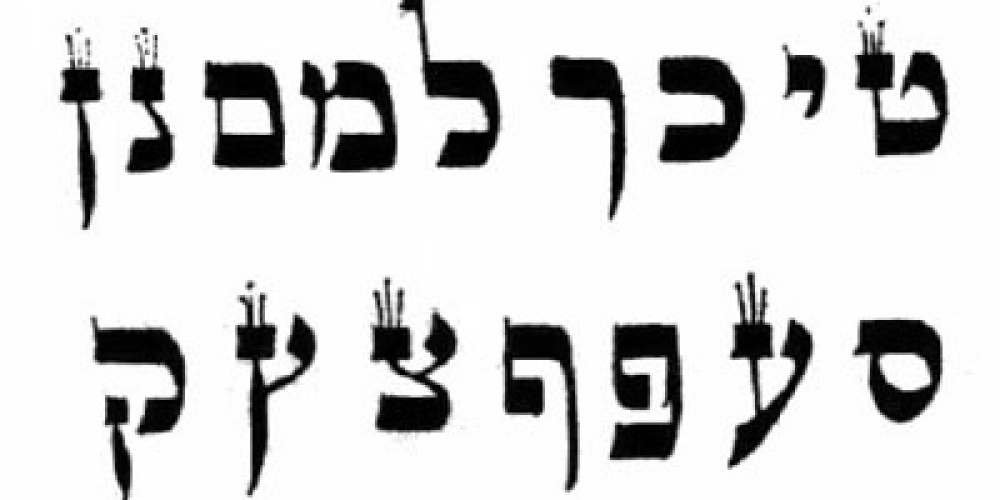
The Latin alphabet, used in many languages of today (including English), is a phonetic system where each letter—or combination thereof—represents various sounds. The visual format of the letter has no inherent meaning, and is rather arbitrary in nature.
Such is not the case with many ancient alphabets (and some modern ones), including Hebrew. While we may view the Hebrew alphabet of today as phonetically based, the shape of the letters does carry significance. According to many sources, the Hebrew font of today used in sacred writing “only” dates from the time of Ezra (6th century BCE). Known as ketav ashurit, it replaced the original font, or ketav ivri. Whether Moshe Rabbeinu received the Torah in this ancient form, or whether ketav ashurit was the original script and was replaced by ketav ivri and then reestablished by Ezra the Scribe is a matter of rabbinic debate.
The Talmud (104a) finds great significance in the form and order of the Hebrew alphabet, devoting nearly a page to understanding the symbolism behind the order and design of the alphabet. The most famous of these passages is the analysis of the Hebrew words for truth and falsehood, emet and sheker. The base of the letters (aleph mem taav) of emet is solid, while the letters of sheker (shin kuf reish) are wobbly, having only one “leg” each. Furthermore, the letters of sheker are the 21st, 19th and 20th letters respectively; whereas emet has the first, last, and middle letters of the alphabet. While one may have to look for truth, truth is true everywhere; whereas lies, readily available, have to be constantly updated for each new situation.
The Talmud notes that the letters gimmel and daled are to be read as Gemol Dallim (show kindness to the poor). This idea, too, is reflected not only in the sounds, but also the shapes of the letters. “Why is the foot of the gimmel stretched toward the dalet? Because it is the way of those who bestow loving kindness to run after the poor. And why is the leg of the daled stretched out toward the gimmel? Because the poor must make himself available to him. And why does the daled turns it face away from the gimmel? Because he must give him [help] in secret, lest he be ashamed of him (104a)”. The Talmud proceeds to go through the entire alphabet, finding hidden gems of meaning in each letter and combinations thereof.
In a revealing but somewhat cryptic comment the Talmud begins its discussion on the alphabet by noting that “young students entered the beit midrash and said things that were not heard even in the days of Yehoshua bin Nun. Perhaps it is Yehoshua’s “last name”, Nun, that explains the Talmud’s reference to him. He is, to the best of my knowledge, the only Biblical figure who has a letter as a name.
The letter nun represents nefila, falling, and it is for this reason that there is no verse starting with nun in Ashrei, our thrice-daily recital of Psalm 145. Rather, we skip to somech Hashem l’kol hanof’lim, the Lord supports all those who fall. Yehoshua was surrounded by those who fell and fell again in their tragic mission to the land of Israel. Had Yehoshua joined with the majority report, it would have been unsurprising. Yet he rose above the others, turning his back on them. The Talmud claims another meaning for nun, that of ne’eman, one who is faithful and trustworthy.
How we interpret the letter nun says much about a person. When facing challenges, some fall and fail. Yet others are trustworthy and faithful – they are the followers of Yehoshua bin Nun.



